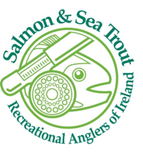Wild Salmon management in Ireland

Wild salmon in Ireland are part of our national identity and Ireland has been one of the largest producers of wild salmon in the North Atlantic. Ireland traditionally operated a commercial offshore fishery, an estuarine draft net fishery and in-river angling.
Fisheries managers and scientists have been concerned for a number of years about the declining numbers of salmon returning to the Irish Coast. Since 1996 a progressive series of conservation initiatives have been introduced to address this decline in stocks.
The ICES Advisory Committee on Fishery Management has advised that both Southern European 1Sea Winter and Multiple Sea Winter stocks are considered to be at risk of suffering reduced reproductive capacity and has recommended, inter alia, that:
“reductions in exploitation are required for as many wild salmon stocks as possible to increase the probability of the complex meeting conservation limits. Furthermore, due to the different status of individual stocks within the stock complex, mixed stock fisheries present particular threats to stock status.”
In 2002 Ireland introduced an annual quota for the angling & commercial salmon fishery and reduced that quota progressively on an annual basis from 219,000 salmon in 2002 to 62,000 in 2007. In order to align fully with ICES and NASCO advice, the Irish Government has closed mixed stock fisheries in 2007. Harvest fisheries are now only allowed on stocks which are shown to have a surplus of fish over the conservation limit. Fisheries in estuaries are only permitted provided the stocks from individual rivers entering the estuaries are meeting conservation limits. A hardship scheme for drift net fishermen including all other commercial fishermen wishing to exit the fishery was introduced in 2007 providing a financial package for affected fishermen. The 2008 allowable harvest has shown an increase to 86,000 salmon which includes both a commercial and angling harvest and is distributed on an individual river basis.
Salmon are now managed on a river by river basis as opposed to a national or district basis. Rivers which have an identifiable surplus over the conservation limit are open for salmon & sea trout fishing. Rivers meeting in excess of 65% of the conservation limit are granted catch & release status subject to approval. Rivers for which there is insufficient scientific information or have a rod catch of less than 10 salmon remain closed. A scheme of rehabilitation of rivers was introduced with priority given to rivers which were below the conservation limit in areas of SAC’s funded through the introduction of a salmon conservation component on all angling & commercial licence sales.
The goal now is to encourage the recovery of stocks in those rivers not yet meeting their conservation limits and to manage all rivers in compliance with the Habitats Directive. In the face of decreasing marine survival, the challenge is to show an improvement in stocks in those rivers over the next few years through investment in habitat improvements and other initiatives.
The core policy goal being pursued by Government is to conserve the resource and facilitate its exploitation on an equitable and sustainable basis. The main challenges over the period 2008 – 2010 are in maintaining the regime introduced in 2007 and monitoring closely its impact on salmon stocks in order to maintain an equitable balance between conservation and exploitation
